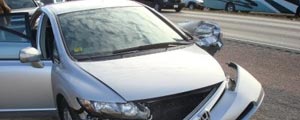
FATAL road accidents in Zimbabwe continue their shocking, upward surge. Road accidents, whether fatal or non-fatal, have now reached such alarming levels that the carnage now needs the same special attention accorded to the HIV and Aids pandemic.
Opinion by Graham Nyakudja
According to Transport minister Nicholas Goche, there are 28 deaths per every 10 000 registered vehicles and there is a traffic collision every 15 minutes with an average of 45 people getting injured per day, while on average five people are killed daily.
If these statistics do not shock the government into action, then nothing ever will.
Fatal accidents have always been with us, but not at the current levels and frequency. In past years, the vehicle population was in proportion to the traffic infrastructure.
In contrast, the prevailing situation has the vehicle population exceeding by far the traffic infrastructure capacity requirements.
Compounding the problem is that the overwhelmed infrastructure is in an advanced state of disrepair, which requires massive effort, willpower and financial investment to put right.
Zimbabweans in the Diaspora, and an upturn in the local economy fuelled by the discovery of diamonds and other minerals have seen the number of vehicles on Zimbabwe’s roads double or even treble in the last three years with cheap imports from neighbouring countries and overseas.
- Chamisa under fire over US$120K donation
- Mavhunga puts DeMbare into Chibuku quarterfinals
- Pension funds bet on Cabora Bassa oilfields
- Councils defy govt fire tender directive
Keep Reading
The increased traffic is one of the causes of accidents, but by no means the only one. Combine non-licensed drivers, unroadworthy vehicles, poor road infrastructure — including pot holes, lack of road signs and road markings — as well as a poorly-resourced and corrupt police force, then you have a disaster waiting to happen.
The licensing office is also a contributor to traffic accidents.
Alleged corruption where non-deserving people are issued with licences is a cause of concern. An incompetent driver let loose behind the wheel obviously is always a danger to himself and others.
The government needs to act on corrupt licensing officers to deter this sick practice motivated by greed for monetary gain.
Police officers manning roadblocks should shun selectivity when executing their duties. Checks should be done on every vehicle using the road irrespective of who owns it. I mean Zupco buses, army vehicles, and personal cars driven by police officers or soldiers wearing uniform should all go through normal checks at roadblocks without favouritism.
Little things like this can lead to serious accidents which otherwise are preventable had normal practices been adhered to. Car manufacturers build cars according to climatic conditions and geographical location where it’s destined for use.
Cars built for Africa are built with specifications to withstand harsh African conditions. Importation of used cars with tyres not built for our conditions can also be a factor in this upward accident trend.
Efforts to solicit informed data on how many accidents are caused by these imports were fruitless, but definitely our conditions may cause serious stress on certain components of the vehicles providing conditions conducive for accidents to happen.
Driver fatigue and disregard of some basic road rules are two of the worst causes of accidents. Taking periodic refresher courses helps very much to minimise human error as an ingredient in the cause of accidents.
The Zimbabwe Traffic Safety Board and the Zimbabwe Republic Police must be commended for doing a good job of random roadside safety awareness.
In December 2012, I was one of the drivers who received a brief roadside lecture on how to drive safely during the rainy season and what checks I needed to do on my car to drive safely. These minor safety awareness briefings are very useful and they go a long way to make sure our roads are safe.
Driving is no longer enjoyable and safe in Zimbabwe. I will quickly point a finger to the state of the roads as the main factor. Too many cars on small, damaged roads is not an ideal situation for safe motoring.
New methods of driver training should be explored. Traffic lights should be backed up with solar power. The authorities should also invest in technology.
Cameras strategically positioned now play a major role in law enforcement instead of countless roadblocks which are not producing any change in driving habits. Funds generated from tollgates need to be used specifically to repair and expand the road network.
The government is responding generally well to combat traffic accidents. Some few roads have been changed to one-way only in Harare. The Harare-Mutare Road is being dualised.
Repairs on the Harare-Bulawayo Road are ongoing. Repairs on other roads around the country are taking place. Although this is not good enough, at least something is happening.
The private sector should also chip in and help in this mammoth task of road building and repairs with the government providing a bigger initiative.











